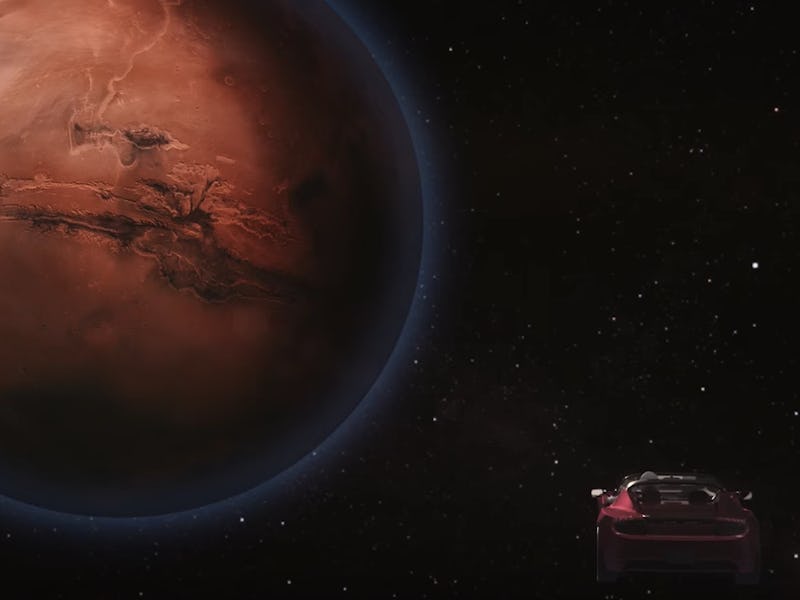Why Elon Musk's Tesla Will Last Thousands of Years in Space, Scientifically

After at least seven years of planning and preparation, on Tuesday, SpaceX’s Falcon Heavy will finally make its maiden voyage. Though the aerospace company will attempt to land several of its boosters back on terra firma, its payload will continue along on a one-way ticket toward Mars — but how long will its sojourn around the Red Planet last?
Let’s clear something up right off the bat: Elon Musk’s midnight cherry Roadster isn’t actually going to Mars. It’s not even going to be orbiting Mars in the way that the red planet’s two moons do. Instead, the car will be placed in a heliocentric orbit, meaning it will revolve around the sun, just like all the planets in our solar system.
Join our private Dope Space Pics group on Facebook for more strange wonder.
“The Falcon Heavy will achieve this by using three rockets, with the first two separating after stage one of the launch,” Ben Thornber, an associate professor at the University of Sydney, writes in The Conversation. “The final rocket will then lift the Tesla Roadster up into space, where it will enter a highly elliptical orbit between the Earth and Mars. Without external interference, Falcon Heavy will remain in this orbit for thousands of years.”
Update: The Falcon Heavy has launched and landed. Watch the full mission video below.
The specific kind of heliocentric orbit Musk’s roadster will be traveling on is called Trans-Mars injection, meaning it will orbit the sun in a manner that will bring it close to Earth and Mars again and again. This could mean that the Tesla will be placed several million miles away from Mars, but it’ll still get to snuggle up to the planet — and ours — many times.
Of course, getting the Roadster to its final destination is the hard part. First and foremast, the Falcon Heavy has to not blow up on ascent, which is harder than it sounds. Then, it has to traverse Earth’s Van Allen belt, which is full of high-energy particles waiting to whack the crap out of it. Then, the Tesla has to cruise in deep space for about six hours to reach the finish line.
It’s a lot, but if SpaceX pulls this off, it’ll make history — again.
“We estimate it will be in that orbit for several hundred million years, or maybe in excess of a billion years,” Musk announced in a press conference yesterday.
There’s only one way to find out whether or not Musk’s Tesla will make it to Mars — watch the launch on Tuesday at 1:30 p.m. Eastern.